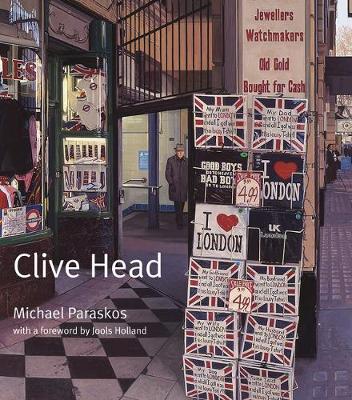Clive Head (b. 1965) is the leading British realist painter of his generation, known for his striking paintings of urban landscapes. He has achieved a worldwide reputation and his work is held in private and public collections internationally. Although there is a clear link between Head's work and the traditions of American Photorealism, the paintings extend that tradition by drawing on a European history of art, with the result that Head's work is as much a descendant of Canaletto, Constable and Ginner as Estes, Bectel and Goings. In his working method, Head seeks to embody a strong sense of place, not simply as a record of the look of a place, but as the expression of a place by a particular person. This is the first full-length monograph on his work and sets out to introduce it to a wider audience. It incorporates a short history of Clive Head's work to date, examining a number of his paintings in detail in order to illuminate his working processes.
Michael Paraskos argues that Head's paintings, in their depiction of multiple viewpoints, have parallels with Cubism, although unlike the Cubists Head seeks to unify multiple viewpoints into a coherent scene, so that the shattering effect disappears. This places Head at the forefront of contemporary aesthetic theory and practice as he seeks to reinvent realist painting for the twenty-first century. The book is illustrated with 100 large-format images, which will help to establish Clive Head as a leading figure in contemporary painting.
- ISBN13 9781848220621
- Publish Date 28 November 2010
- Publish Status Out of Print
- Out of Print 27 January 2021
- Publish Country GB
- Imprint Lund Humphries Publishers Ltd
- Format Hardcover
- Pages 200
- Language English
